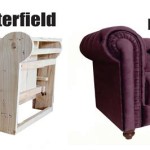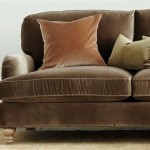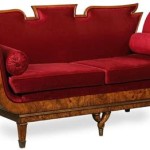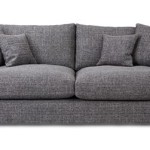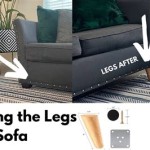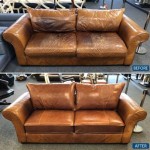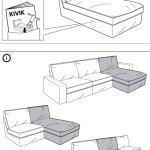Cloth Chesterfield Sofa: A Timeless Fusion of Comfort and Style
The Chesterfield sofa, with its distinctive rolled arms, deep button tufting, and low seat, has long been recognized as a symbol of sophistication and timeless elegance. While traditionally associated with leather upholstery, the cloth Chesterfield sofa offers a compelling alternative, providing a different aesthetic appeal and often a higher degree of comfort. This article will delve into the various aspects of cloth Chesterfield sofas, exploring their advantages, variations, and considerations for selection and maintenance.
The Chesterfield design originated in the 18th century, reportedly commissioned by Lord Philip Stanhope, the 4th Earl of Chesterfield, who sought a seating solution that would allow him to sit upright comfortably without wrinkling his clothes. This initial concept has evolved over centuries, resulting in the iconic piece of furniture we recognize today. The shift towards using cloth upholstery broadened the appeal of the Chesterfield, making it accessible to a wider range of design preferences and budgets.
Advantages of a Cloth Chesterfield Sofa
Choosing a cloth Chesterfield sofa offers several distinct advantages over its leather counterpart. Comfort is often cited as a primary reason for selecting cloth. Fabric generally feels softer and warmer to the touch than leather, particularly in colder climates. This can contribute significantly to the overall seating experience, making it more inviting and relaxing. Furthermore, cloth upholstery breathes better than leather, reducing the likelihood of feeling sticky or overheated during warmer months. This breathability enhances comfort and makes cloth Chesterfields a practical choice for diverse climates.
Another key advantage is the variety of aesthetic options available. Cloth upholstery comes in a vast array of colors, patterns, and textures, allowing for greater customization and integration with existing décor. From classic neutrals like beige and grey to bolder options like jewel tones or intricate patterns, the possibilities are virtually limitless. This versatility makes it easier to find a cloth Chesterfield that perfectly complements the specific style and color scheme of a living room or office.
Cost is also a factor for many individuals. In general, cloth Chesterfield sofas are often more affordable than leather versions, especially for high-quality leather. The lower initial investment makes it a more accessible option for those seeking the classic Chesterfield design without the premium price tag associated with genuine leather.
Variations in Cloth Chesterfield Sofa Design
While the fundamental design elements of a Chesterfield sofa remain consistent, variations in cloth upholstery, frame construction, and detailing provide a wide range of stylistic choices. Different types of fabrics can dramatically alter the overall look and feel of the sofa. Velvet, for example, offers a luxurious and opulent aesthetic, while linen provides a more relaxed and casual vibe. Tweed and other textured fabrics can add depth and visual interest.
The quality of the frame construction is crucial for the longevity and durability of the sofa. Hardwood frames, typically made from kiln-dried wood such as oak or birch, offer superior strength and stability compared to frames made from softwood or composite materials. The frame should be robust enough to withstand regular use and prevent sagging or warping over time.
The detailing of a cloth Chesterfield can also vary significantly. The depth and spacing of the button tufting, the style of the rolled arms, and the design of the legs all contribute to the overall aesthetic. Some Chesterfields feature deep diamond tufting, while others have more subtle buttoning. The arms can be tightly scrolled or more loosely curved. Leg options range from traditional bun feet to more modern tapered legs, allowing for further customization to suit individual preferences.
Size is another important consideration. Cloth Chesterfields are available in various sizes, from compact loveseats to large sectional sofas. The appropriate size will depend on the available space and the intended use of the sofa. A smaller Chesterfield might be ideal for an apartment or a small office, while a larger sectional would be better suited for a spacious living room.
Considerations for Selecting and Maintaining a Cloth Chesterfield Sofa
When selecting a cloth Chesterfield sofa, several factors should be carefully considered. The first is the quality of the fabric. Look for durable, stain-resistant fabrics that can withstand regular use and cleaning. High-quality fabrics will maintain their appearance and integrity for a longer period of time. Consider the fiber content of the fabric. Natural fibers like cotton and linen are breathable and comfortable, but they may be more prone to staining and wrinkling. Synthetic fibers like polyester and microfiber are more durable and stain-resistant, but they may not be as breathable.
The construction of the sofa is equally important. Examine the frame to ensure it is made from solid hardwood and that the joints are securely fastened. Check the spring system to ensure it is properly installed and provides adequate support. The cushions should be well-padded and retain their shape over time. The stitching should be neat and even, indicating attention to detail and quality craftsmanship.
Maintenance is essential for preserving the appearance and longevity of a cloth Chesterfield sofa. Regular vacuuming is crucial for removing dust and dirt that can accumulate on the fabric. Use a soft brush attachment to avoid damaging the upholstery. Address spills and stains promptly to prevent them from setting. Blot the stain with a clean, absorbent cloth, working from the outside in. Avoid rubbing the stain, as this can spread it further.
Professional cleaning is recommended periodically to deep-clean the fabric and remove embedded dirt and stains. Follow the manufacturer's instructions for cleaning and care. Avoid using harsh chemicals or abrasive cleaners, as these can damage the fabric. Consider using a fabric protector to help repel stains and protect the sofa from everyday wear and tear.
Sunlight can fade the color of the fabric over time, so it is advisable to position the sofa away from direct sunlight or to use curtains or blinds to filter the light. Rotate the cushions regularly to ensure even wear and prevent them from becoming compressed in certain areas. Fluff the cushions periodically to maintain their shape and support.
By considering these factors and following proper maintenance procedures, a cloth Chesterfield sofa can provide years of comfort, style, and enjoyment. Its versatility and timeless appeal make it a valuable addition to any home or office.
The choice between a cloth and leather Chesterfield ultimately depends on individual preferences, budget, and lifestyle. While leather offers a classic and durable option, cloth provides a wider range of aesthetic possibilities and often a higher degree of comfort. By carefully considering the advantages and disadvantages of each material, one can make an informed decision that will result in a beautiful and functional piece of furniture.
The enduring popularity of the Chesterfield sofa is a testament to its timeless design and versatility. Whether upholstered in luxurious velvet, durable linen, or a vibrant patterned fabric, the cloth Chesterfield continues to be a symbol of style, comfort, and sophistication.

Buckley Fabric Chesterfield 3 Seater Sofa Furniture World

Ludlow Compact Chesterfield Sofa The Company

Chesterfield Sofa Fabric British Sofas

Chesterfield Fabric Sofa Pottery Barn

Handmade 3 Seater Light Grey Velvet Fabric Chesterfield Sofa

Fabric Chesterfield Sofas Made In Cotton Wool Velvet 70 Colours

How To Choose The Ideal Fabric Chesterfield Sofa Timeless Chesterfields Blog

Arundel Vintage Fabric Sofa Chesterfield Company

Hampton 3 2 Seater Chesterfield Sofa Set Light Grey Classic Linen Weave Fabric Only 1449 98 Furniture And Choice

How To Choose The Ideal Fabric Chesterfield Sofa Timeless Chesterfields Blog

